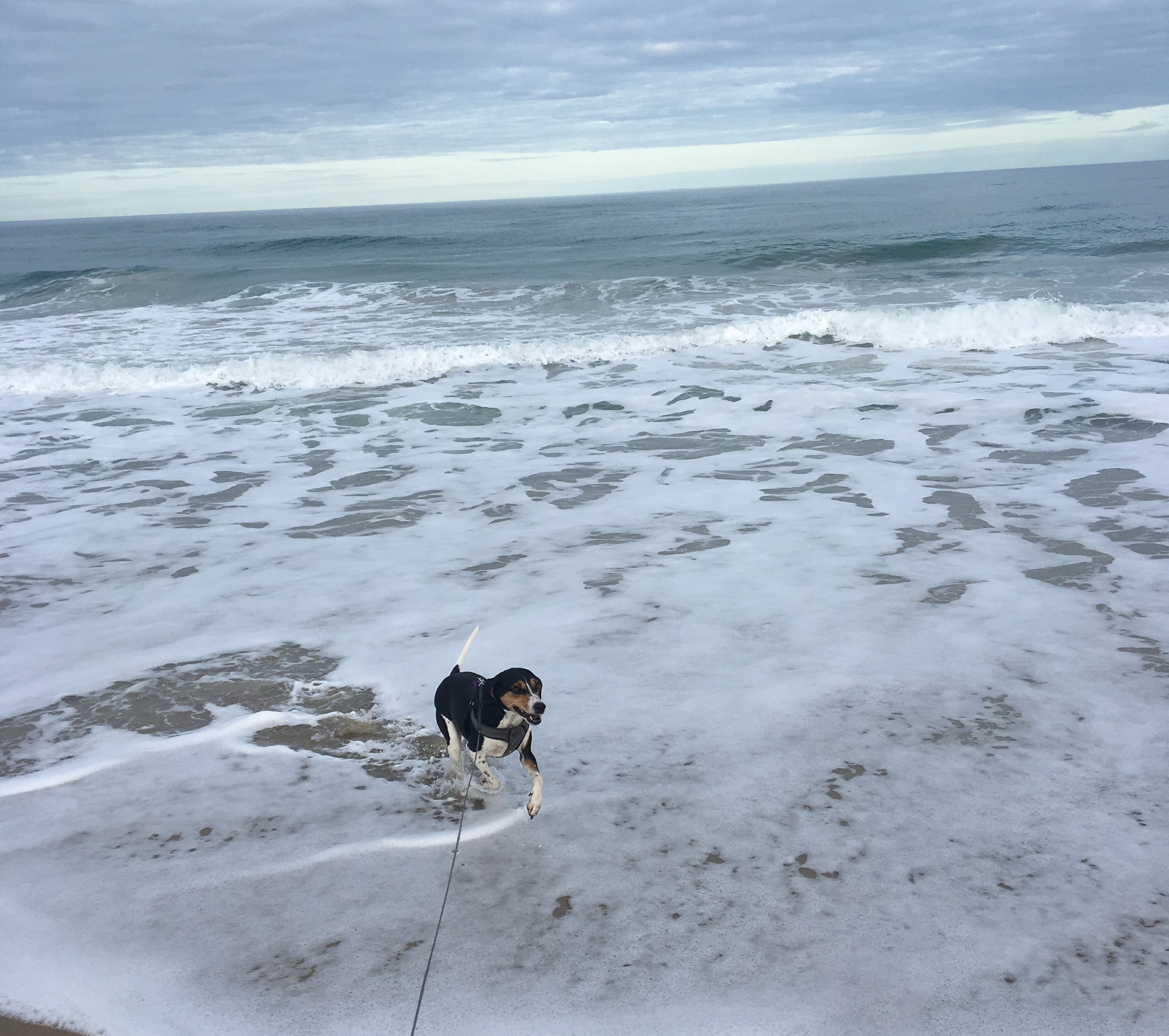*This post contains affiliate links. As an Amazon Associate and Beautycounter consultant, I earn from qualifying purchases. This means when you make a purchase, I get a commission at no cost to you! Read more about my affiliates on my Affiliate Links Disclaimer.
Most people go to the beach to have a good time. Whether it’s a day trip or a long vacation, the beach is a very popular vacation destination. In fact, the beach is one of my favorite places to visit.
With so many people around and development right up to the beach, it’s easy to forget that the beach is an ecosystem that many plants and animals make their home, even when it’s developed. But we shouldn’t forget this because so many of our actions directly harm this beautiful ecosystem. In this blog post, I will show you how to see the beach as an ecosystem and ways you can have a more sustainable beach trip.
Sustainable Beach Trip Tips:
1. Recognize that the Beach is Home for Plants, Animals, and More!
Don’t skip the beach, but instead, enhance your trip by learning about its wildlife. The first step to a more sustainable beach trip is to recognize that you are sharing the beach with animals, plants, and more. This is actually may favorite part of the beach!
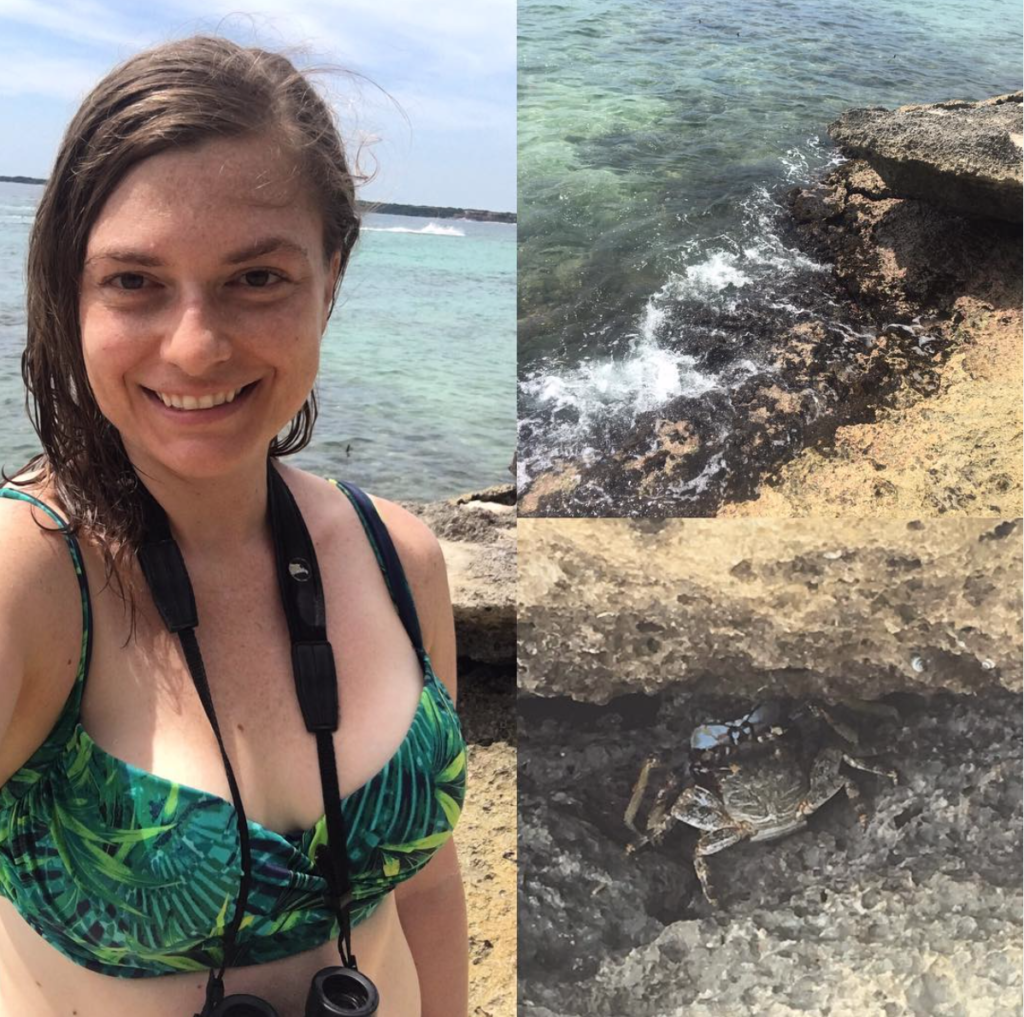
Even on the most crowded beaches, I’ve see amazing wildlife; you just have to look for it. I went to a VERY crowded beach in Cartagena, Colombia, and when I went underwater and opened my eyes (with goggles), I saw coral and beautiful tropical fish swimming around. Even though the beach was all white sand and with so many people there, it didn’t seem like there was wildlife there, there was.
Here’s some of the wildlife I’ve seen from just standing on and exploring the beach and tide pools:
- Dolphins in the Outer Banks, North Carolina
- Sea turtles in South Carolina and Florida
- Sea stars, starfish, sea urchins, and crabs in Kenya, Mexico, Costa Rica, India, and Oregon
- Eels and tropical fish in Kenya
- Monkeys in Costa Rica
- Seals in Oregon
- Seabirds on every single beach I’ve been to!
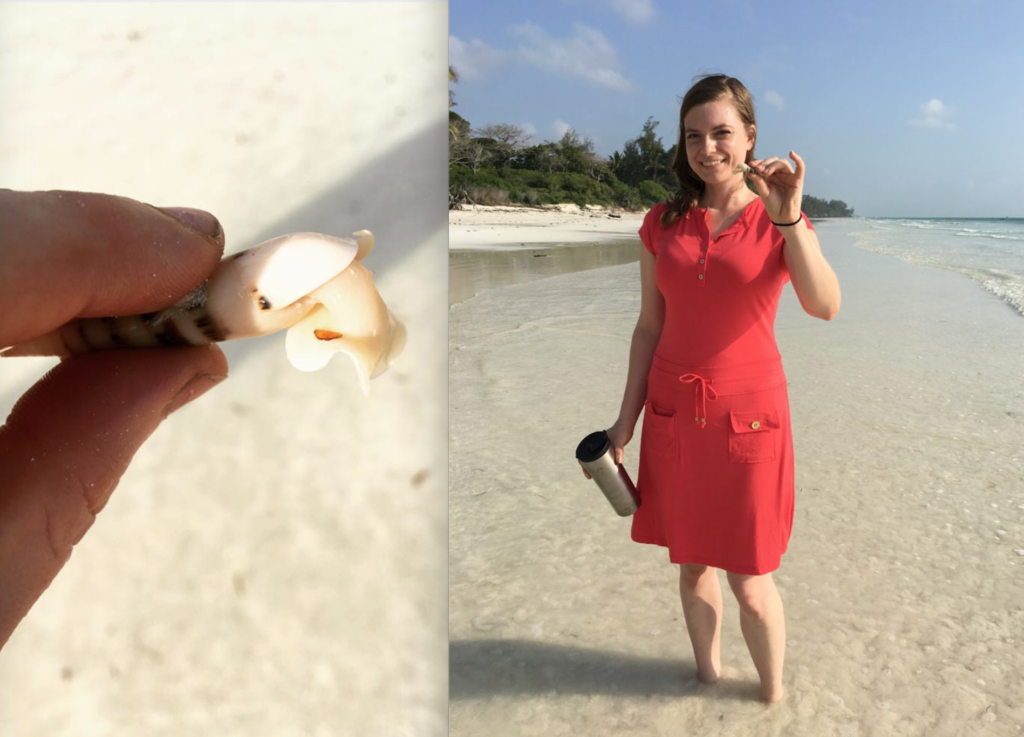
An animal you can always see at the beach is birds. Bring binoculars and a bird book to create a life list by marking the ones you’ve seen. It’s especially important to teach young ones about wildlife at the beach because experiences in natures predict future pro-conservation behaviors and attitudes. The beach IS nature and when they get to know the plants and animals living at the beach, they are more likely to care about them and be responsible beach goers in the future.

2. Leave No Trace
It is SO important for you to leave the beach as you saw it before you were there for a sustainable beach trip. This is especially true for garbage. I don’t know what happens when people go to the beach, but apparently, it results major memory loss! People seem to forget the things they brought to the beach. Over this past Memorial Day weekend, people visiting Virginia Beach left 10 tons of trash just in a single weekend. I experienced a similar situation when I went to Hilton Head Island, South Carolina two years ago.
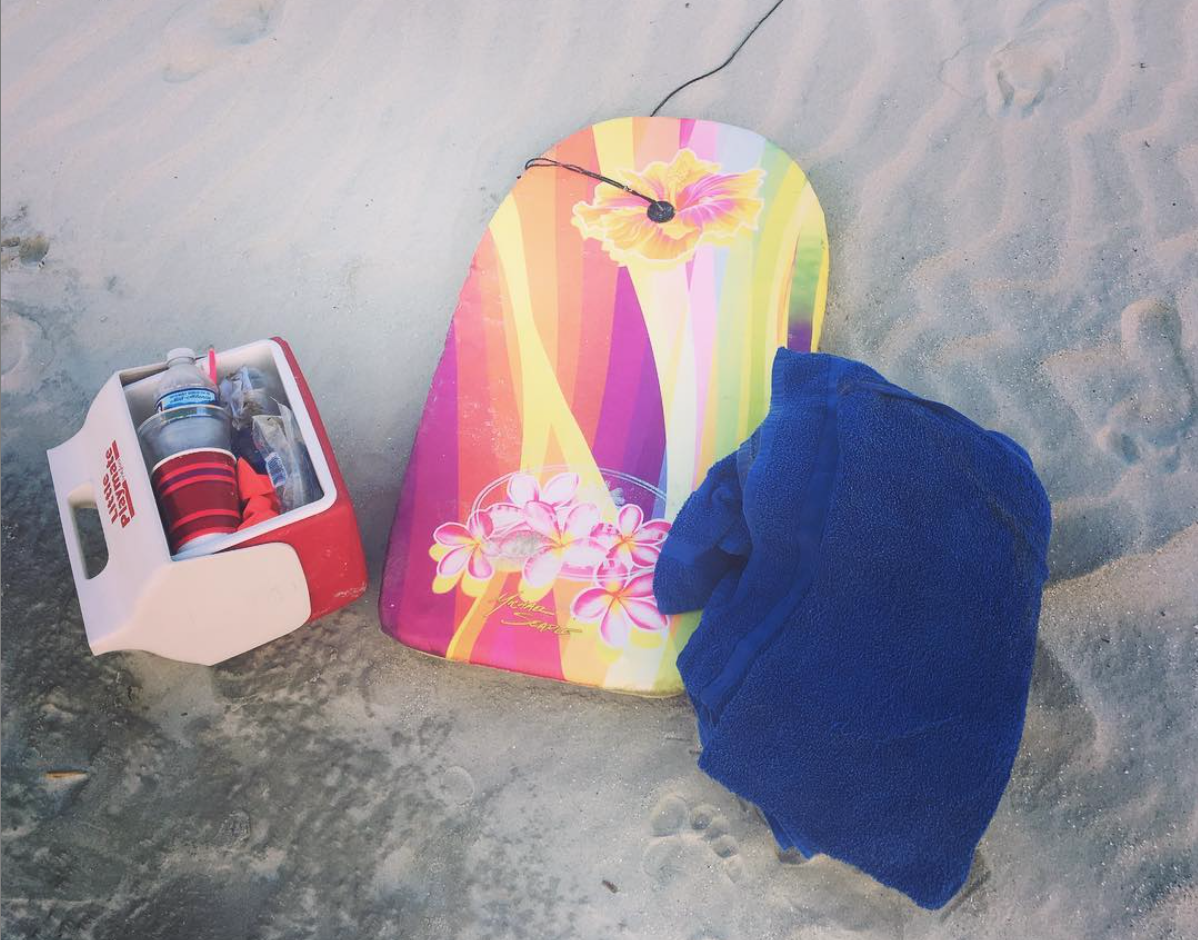
For a more sustainable beach trip, make sure to bring all of your items back with you! I’ll give you some more tips below on how to simplify this.
3. Say No to Plastic

Plastic is quite literally killing our wildlife, and especially ocean wildlife. This is because when plastic escapes into the environment, it is washed away into creeks and rivers, which eventually feeds into the ocean. Animals think it is food and ingest it, it gets caught in their bodies (like this plastic straw that went up this sea turtle’s nose), or they get tangled in it. Because the beach is literally at the ocean, and it is often windy, it’s best just to avoid plastics here because they have such a high chance of being blown into the ocean. Here are some things you can do to reduce your plastic use for a sustainable beach trip:
- Bring your own water bottle and refill it. If you are traveling internationally, use a SteriPen so you don’t have to keep buying new water bottles.
- Bring your own snacks that don’t have plastic. Some examples include loose fruit (apples, bananas) and nuts in reusable produce bags.
- Say no to straws and lids! Unless you have a disability, you don’t need them. If you absolutely need a straw, buy and bring sustainable or reusable ones.
4. BYO Sealed Garbage Bag
If you will produce some garbage during your beach visit, I suggest bringing your own garbage bag, especially a large ziplock style bag, for a sustainable beach trip. Even though lots of beaches have garbage cans on the beach, I’ve seen garbage blow out of these trash cans and onto the beach, which means it will go into the ocean. By bringing your own bag, you can put all of your garbage in there and then dispose it in the garbage cans more inland or even bring it home with you. I know this sounds crazy, but in many countries across the world, they don’t have a good system for disposing garbage, which is another large reason for it ending up in the ocean. China, Indonesia, Philippines, Thailand, and Vietnam are the biggest plastic polluters.
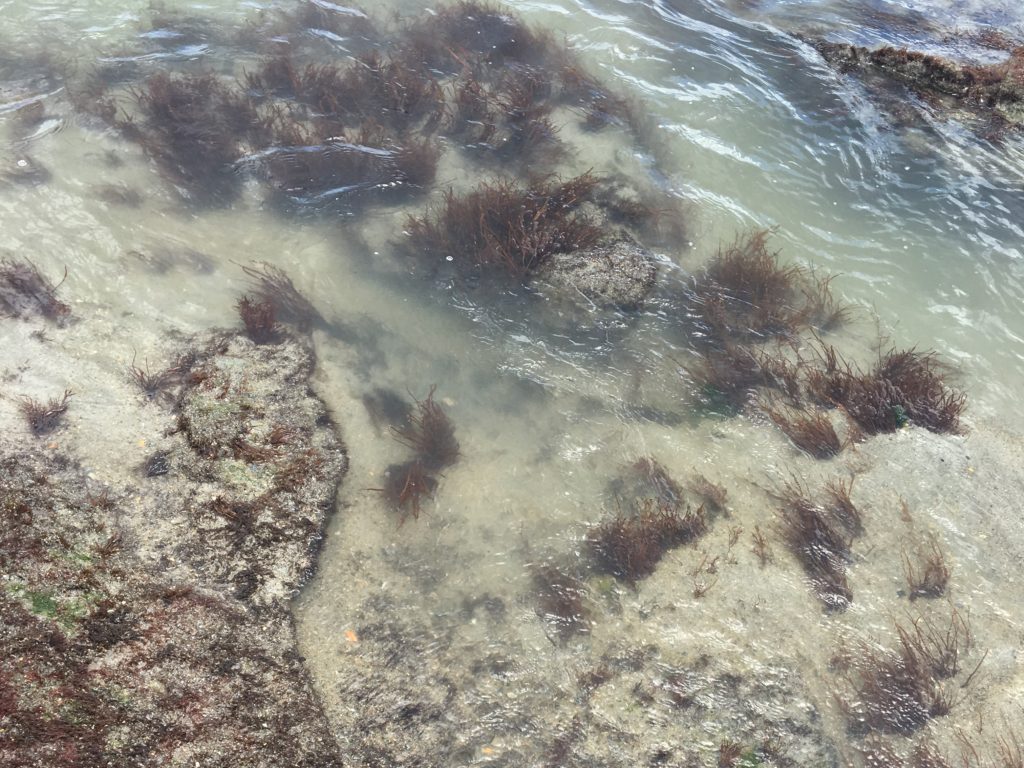
5. Pick Up Litter During Your Stay
Another reason to bring a trash bag is to help with beach clean up! When you see trash on the beach that is not yours, pick it up and put it in your handy dandy trash bag that you brought! Do as much as you can. Every little bit counts.
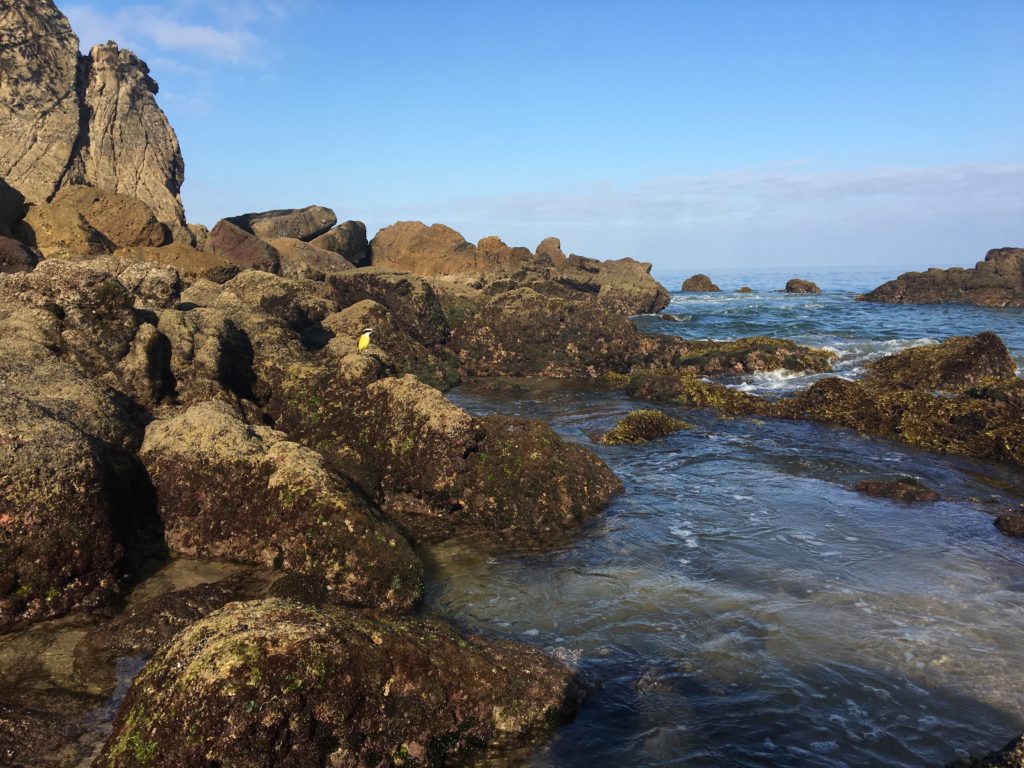
6. Put Cigarette Butts in the Garbage! They Have Plastic in Them
I was so surprised to learn this, but cigarette butts are actually the item that is collected most during beach cleanups. I never worried about cigarette butts because I assumed they were biodegradable, but this is WRONG! The filters are unfortunately made of plastic. Better yet? Quit smoking! It’s better for you and the planet.
7. Wear Mineral Sunscreen and/or Sit in the Shade
Most sunscreens are made with oxybenzone and octinoxate. These two ingredients are linked to coral bleaching. When these chemicals accumulate in the water, they kill corals even at low levels and are thought to do so by promoting a viral infection.
There may be more corals around than you think if you are in a tropical area. For example, when I was swimming at a very busy beach near Cartagena, Colombia, and looked underwater with my goggles, I was surprised to see rocky areas with corals mixed into the white sands.
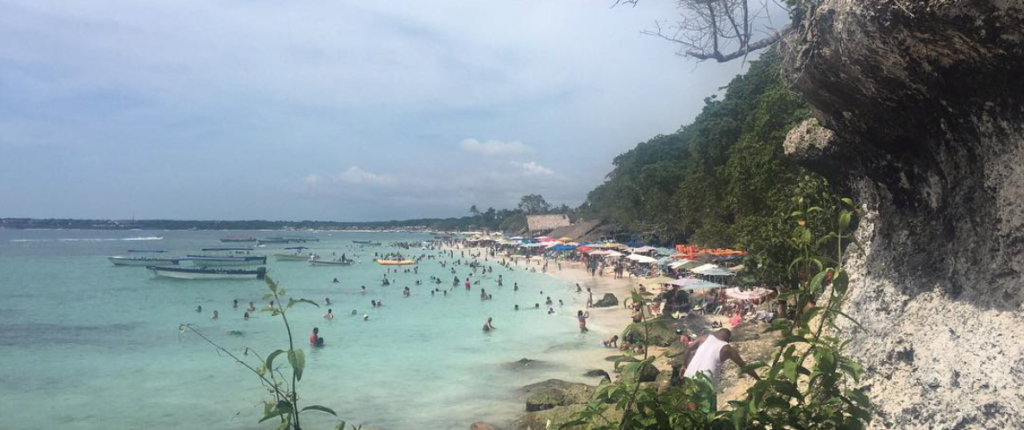
Even if you aren’t near any corals, switching to a mineral sunscreen without oxybenzone and octinoxate is a good idea because those ingredients could be harming other wildlife (to my knowledge this hasn’t been studied yet). Additionally, oxybenzone is an endocrine disrupter in humans and may be harmful to your health. Recently, scientists found out that non-mineral sunscreens penetrate into your bloodstream and the FDA initiated a statement that only two active ingredients in sunscreen are definitely safe, while the others need research. Mineral sunscreens protect your skin by sitting on top of your skin. You can buy my favorite brand here.
8. Level Out Sand Castles and Fill in Holes
Playing in the sand and building sand castles is super fun, but it also can be detrimental to wildlife. When I saw baby loggerhead sea turtles in Hilton Head, South Carolina, I was SO EXCITED that I started to read more about them. I was astonished to read that when people build sand castles with moats that the baby turtles can get stuck in them and not be able to get out. My friend and turtle expert, Dr. David Steen, even posted an Instagram video of a baby sea turtle that was struggling to get out of the imprint of a human footprint. It eventually got out, but it’s sad to think that even walking on the beach can create an obstacle for this amazing animals.
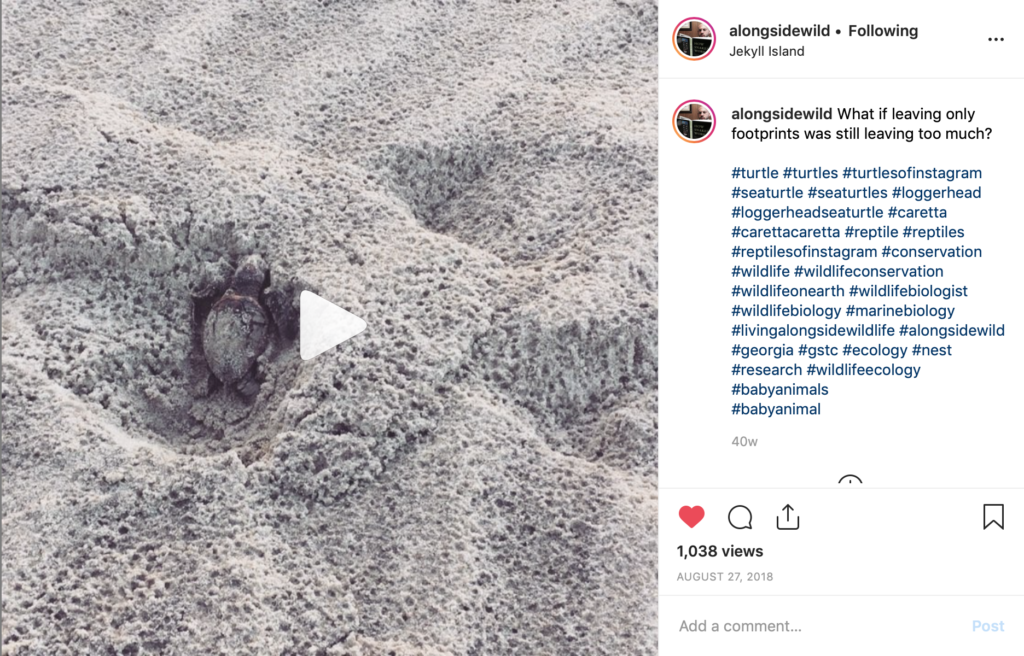
9. READ Signs and Adhere to Rules
Again, the beach is home to lots of plants and animals and what we do can have negative impacts on them. For example, climbing or walking on dunes can destroy them, lights on the beach at night can disorient baby sea turtles making their way to the ocean, and touching endangered wildlife (like sea turtles) is considered harassment. There are always signs posted, so read them and adhere to the rules on them!
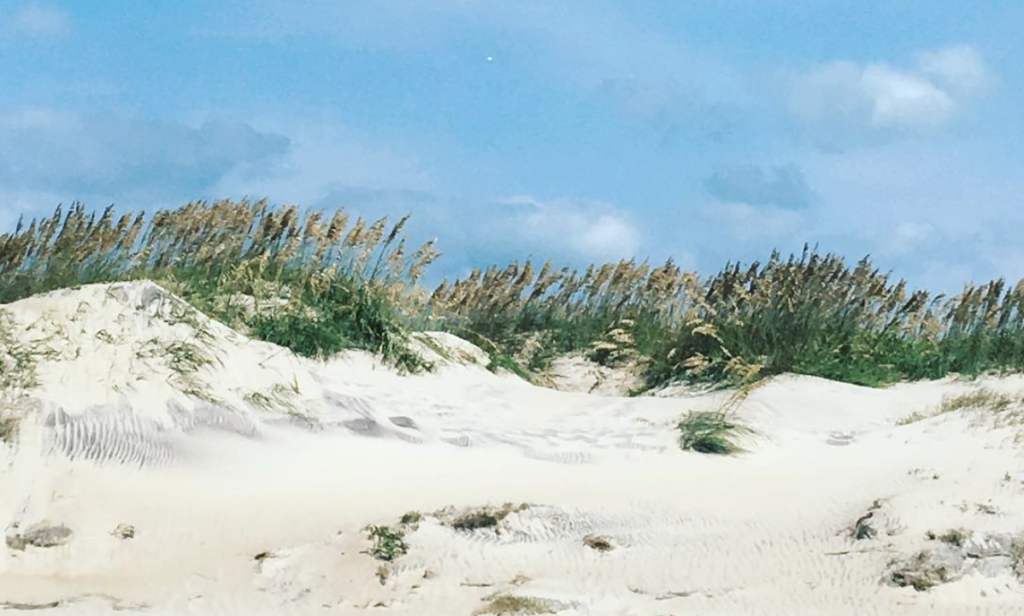
10. Participate in Responsible Wildlife and Ecotourism
Lots of people like to see wildlife when they go to the beach and wildlife tourism is a big industry, but you have to be careful about what activities you support. I am against swimming with captive dolphins, but swimming with even wild dolphins can even be harmful to them. Research in some areas of the world show that swimming and diving with wild dolphins can disrupt their sleep and may even be contributing to population declines. If you need help deciding what is responsible wildlife tourism, read “5 Guidelines for Ethical Wildlife Tourism” for a helpful flow chart.

11. Leash Your Dogs!
I LOVE dogs! I have two, but they love to chase wildlife. Although our previous research found dogs to not have a big impact on wildlife in parks in the Eastern US, at the beach, you have a real chance of encountering threatened or endangered species like sea birds and the baby sea turtles I saw. I saw two baby sea turtles making their way to the ocean in the morning during my stay on Hilton Head Island in South Carolina. At the time, there were already lots of people walking the beach and lots of unleashed dogs. Imagine if one of those dogs found the sea turtles? They might have put them in their mouth or pawed at them and killed them. Worldwide, dogs contribute to the decline and even extinction of wildlife.
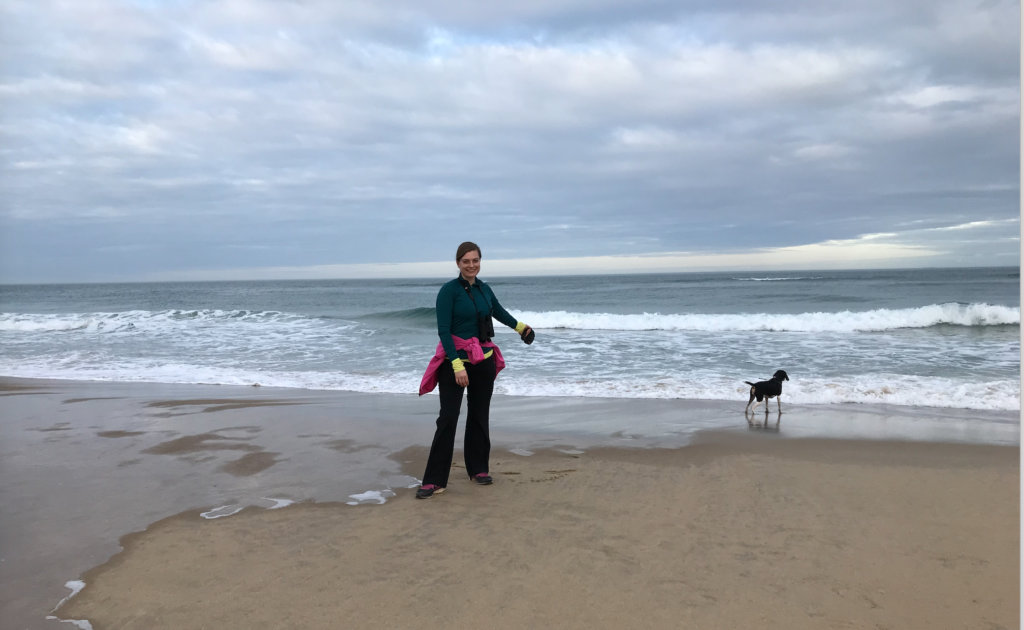
12. Support Ecofriendly Resorts and Establishments
If you are visiting hotels and restaurants, support ones that have ecofriendly practices. For example, look for places that have sea turtle friendly lighting at night (low or red lighting) or use paper instead of plastic straws.
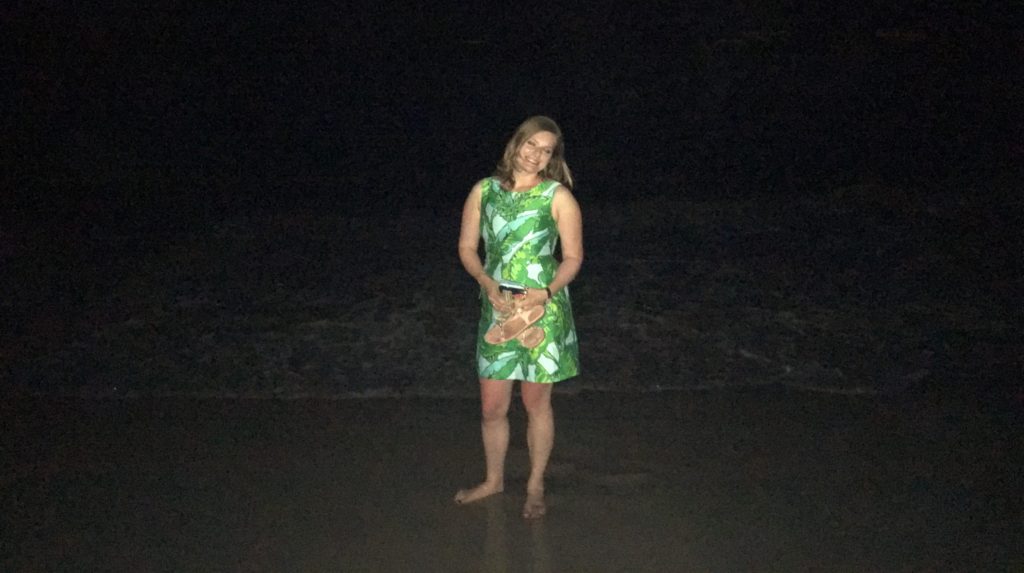
13. Put Pressure on Businesses!
If there are no ecofriendly options, tell businesses to adopt them! Tell them in person the impact of plastic and why you have a no straw/lid policy. Post these messages on social media and tag the businesss. I will make posts on Twitter and Yelp asking them to get rid of single use plastics. No business likes to receive negative attention and the public pressure on reducing plastics is growing.
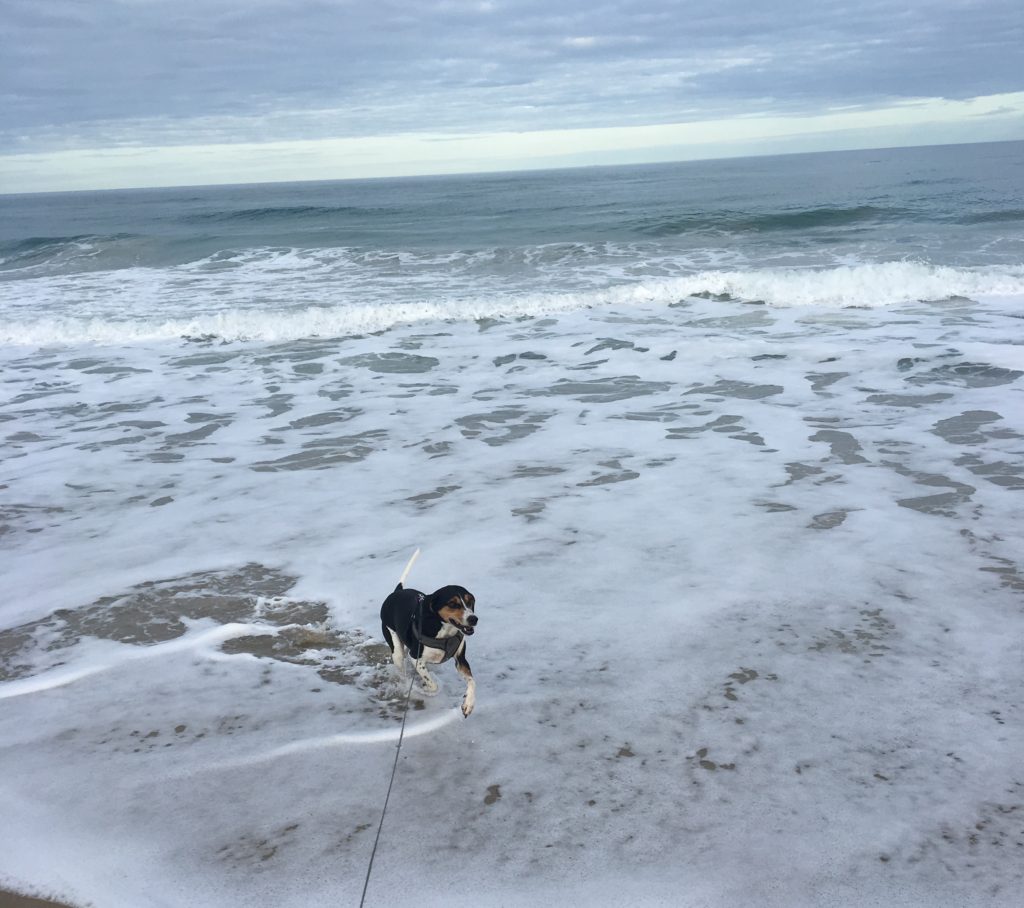
14. Wear a Sustainably Made Swimsuit
Although I love fashion, the fashion industry is a major polluter and contributes to climate change. One of the ways you can help out the environment is choosing brands that are committed to sustainability. I personally love prAna. This swimsuit is so cute, comfy, and made of all recycled nylon.
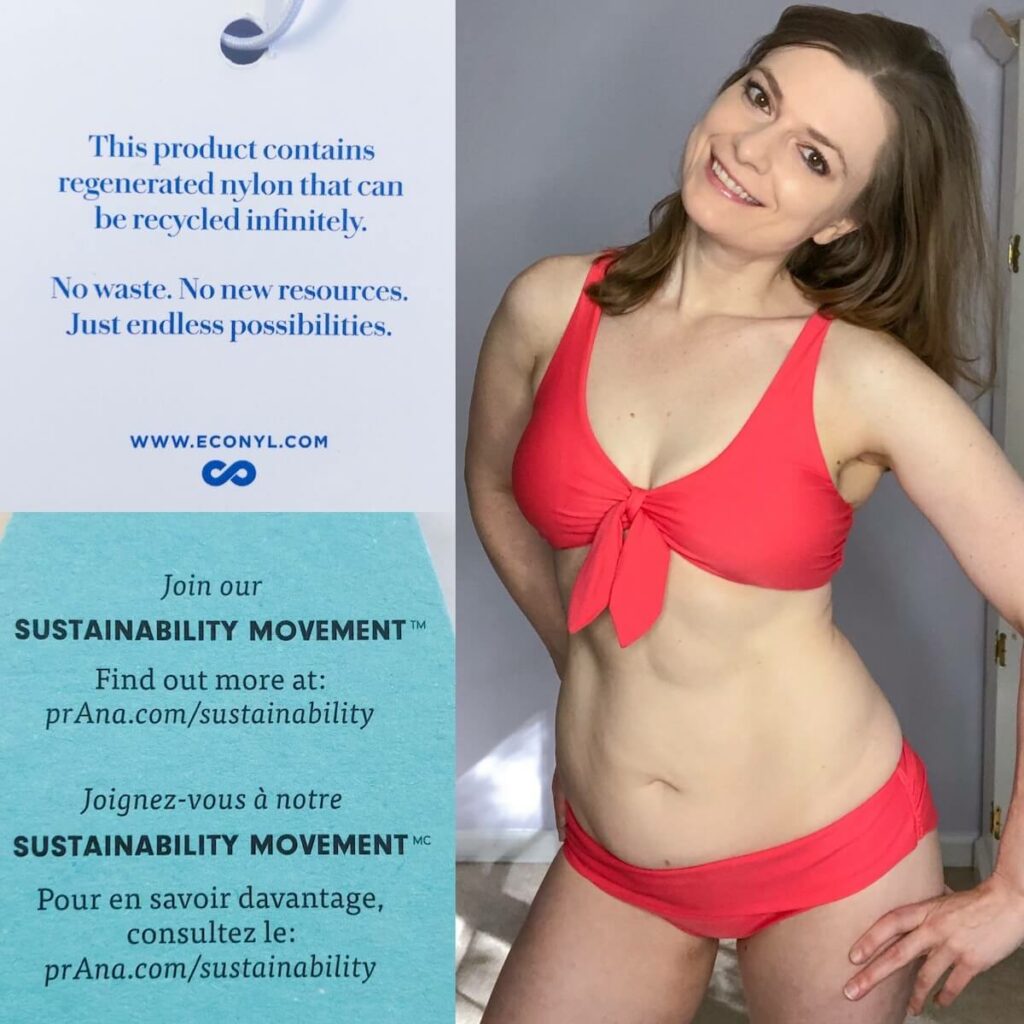
The beach is an amazing ecosystem to visit, but when we visit, we must remember it is more than just a party location and to make a sustainable beach trip. It’s a place where lots of plants and animals call home. Let’s keep it nice for them.
Love this post? Share it with friends!

